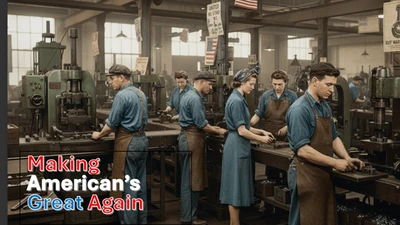The markets are wound up again this week, bouncing between “soft landing” optimism and “hard landing” fears. I’m walking through it day by day, keeping an eye on the numbers that matter — and reminding myself not to panic every time Wall Street gets a case of the jitters. And right on cue, the Congressional Budget Office dropped a headline that tariffs could reduce our deficit by nearly $4 trillion over the next decade. That’s big news, but it needs to be weighed carefully.
Monday – Housing, Fed Sentiment, and the Tariff Deficit Story
The week kicks off with new home sales. Housing is like the pulse of the middle class — if people are buying, confidence is still alive; if not, it’s another red flag. Jerome Powell’s recent Jackson Hole comments leaned dovish, hinting at concern about jobs. Rate cuts may be on the horizon, but let’s be real: sometimes when the Fed says “relief,” what they really mean is “the economy is slowing down.”
Now add the CBO’s new headline: tariffs could slash the deficit by $4 trillion over the next decade. On paper, that’s encouraging — Washington collects more revenue, borrowing costs ease. But tariffs aren’t free money; they’re passed along to businesses and consumers. So I’ll be watching not just the deficit story, but whether tariffs show up in higher prices.
Tuesday – Durable Goods and Consumer Confidence
Tuesday brings durable goods orders (big-ticket items like planes and equipment) and consumer confidence numbers. If both dip, it’s the classic sign of households and businesses pulling back. Wall Street will cheer because it “forces” the Fed to cut rates — but Main Street knows a slowdown means caution, not celebration. I’ll also listen closely to Fed speakers that day to see if Powell’s tone is echoed.
Wednesday – Nvidia and Tariffs
This is the day Wall Street circles in red ink. Nvidia reports earnings, and the entire AI craze rests on its shoulders. If they hit, tech keeps running; if they stumble, expect some cold water on the hype train. At the same time, I’m watching Washington and trade headlines — talk of new tariffs on India could rattle sectors from manufacturing to retail. And in the backdrop is the CBO’s math: yes, tariffs help the deficit, but if they raise costs for consumers and companies, those gains can vanish quickly.
Thursday – GDP and Jobless Claims
We get the second estimate of Q2 GDP. If growth holds above 3%, the economy still has some legs; if not, we’re slipping. Weekly jobless claims and pending home sales also drop. These reports are the real nuts and bolts — how many people are still working and whether families are still buying homes. Wall Street likes to gamble on trends, but I’d rather look at the fundamentals: jobs and housing still tell the truth.
Friday – PCE Inflation and Consumer Sentiment
The week closes with the Fed’s favorite inflation measure: the PCE index. If inflation comes in soft, Wall Street will scream “rate cuts are coming.” If it ticks up, they’ll panic. Either way, I plan to stay level-headed. Add in consumer sentiment and trade balance data, plus a few straggler earnings from big tech and retailers, and we’ll have a full picture before the long weekend.
This is also where tariffs may show their true cost. If they’re really boosting government revenue like the CBO says, that’s fine — but if they’re fueling higher inflation, they’ll show up right here in the PCE numbers.
My Takeaway
This week is a balancing act. If inflation keeps cooling, I’ll look at bonds and dividend stocks to lock in stability. If tariffs or weak growth headlines rattle markets, I’ll sit tight and stay defensive. Nvidia will grab the spotlight, but the real story is whether the American economy is powering ahead or quietly stalling.
The way I see it: tariffs may reduce the deficit on paper, but they’re more like duct tape than a blueprint. Useful for shoring up Washington’s budget, but risky if they squeeze consumers and growth. Wall Street can chase fads and hope for Fed bailouts. Conservative investors like me will focus on strength, income, and patience. After all, it’s not about winning every daily swing — it’s about making sure the long game pays off.










